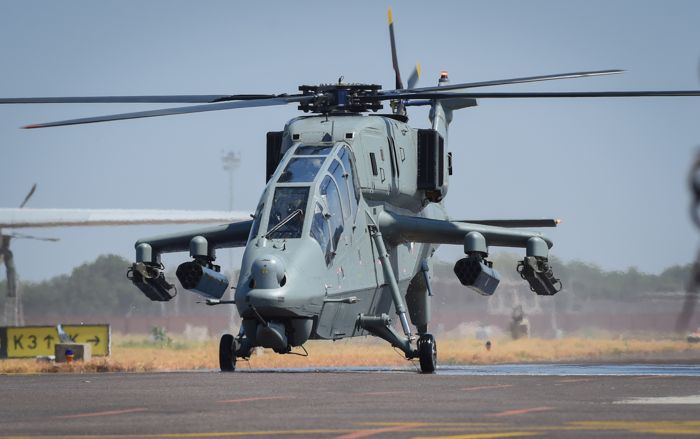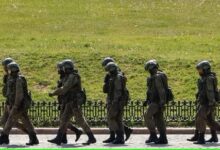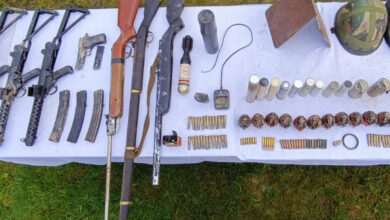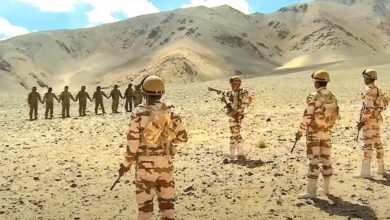India’s ‘Prachand’: 145 Made-In-India Light Combat Helicopters To Enter Mass Production

- The Army is planning to add attack helicopters to all pivot groups to improve anti-armor support in close quarters.
- The LCH could not have been brought in at a better time than during Navratri and in Rajasthan, the land of fighters.
Sources in the government have stated that mass production of the much-anticipated 145 Light Combat Helicopter (LCH) “Prachand” will start soon. The Deputy Chief of the Air Staff, Air Marshal Ashutosh Dixit, went to Hindustan Aeronautics Limited (HAL) on June 15 and flew the LCA Tejas series production trainer-01 himself. During the meeting, he was given a full report on how the production of the local combat chopper was going.
3 Things You Need To Know
- The Deputy Chief of the Air Staff, Air Marshal Ashutosh Dixit, went to the National Flight Test Centre, the Aeronautical Development Agency, and the HAL Tejas Division.
- The Indian Air Force is almost done receiving 10 LCH Limited Series Production planes.
- The LCH’s ability to fight well at high altitudes was a huge advantage that changed the way operations were done in the difficult Himalayan area, including Siachen.
In March 2020, the Cabinet Committee on Security (CCS) agreed to pay 3,887 crore to buy 15 LCH versions made in a “limited series production” (LSP). Ten of the 15 planes went to the IAF, and the other five went to the Army. The IAF has put its LSP versions of the combat helicopter in Jodhpur, which is close to the border between India and Bangladesh. The Army has put its first LCH unit in Missamari, Assam, which is only 250 km from the Line of Actual Control (LAC).
नाम है ‘प्रचंड’ pic.twitter.com/dCa3WGvw9A
— Rajnath Singh (@rajnathsingh) October 3, 2022
Prachand: India’s First Indigenous Combat Helicopter
The HAL-made twin-engine LCH is a 5–8-tonne combat helicopter that is made for activities at high altitudes. It has a service ceiling of 6,000–6,500 meters and a fighting range of 500 km. The helicopter has stealth features, defense from armor, and the ability to attack at night. The LCH is a powerful multirole combat helicopter because it has a glass cockpit, a low radar cross-section, and combined systems like the combined Architecture Display System (IADS), Countermeasure Dispensing System (CMDS), electro-optical (EO) pod, and electronic warfare (EW) suite.
The LCH has a maximum takeoff weight (MTOW) of 5,800 kg, a top speed of 268 km/h, a range of 550 km, and a service ceiling of 6.5 km. It is armed with a 20mm gun, rockets, and air-to-air and air-to-ground missiles. Two HAL/Turbomeca Shakti-1H1 engines, each with a power output of 1,032 kW, run it. Infrared suppressors are built into the engines.
The LCH is made so that it can fight in different ways, including high-altitude warfare. It is very good at anti-infantry, anti-armor, destruction of enemy air defense (DEAD) operations, urban warfare, counter-insurgency operations, counter surface force operations (CSFO), escorting special heliborne operations (SHBO), combat search and rescue (CSAR) operations, and armed aerial scouting. The HAL Dhruv gave the LCH its narrow fuselage, stealth-style design, and powerful rotor technology.
Enhancing fighting capabilities
The Army is planning to add attack helicopters to all pivot groups to improve anti-armor support in close quarters. At the same time, the Air Force is getting these helicopters to help the IAF take out high-altitude targets and make up for the fact that the number of attack aircraft in its fleet is going down. Notably, the Indian Army wants to get about 95 LCH units, while the IAF wants to get 65, which will improve their operational powers even more.
Addressing Operational Gaps
At the moment, the LCH doesn’t have an electronic warfare suite like the Advanced Light Helicopter “Rudra” with integrated weapon systems, which has Saab’s Integrated Defensive Aids Suite (IDAS). IDAS gives the planes radar warning receivers, missile warning systems, and laser warning systems.
This lets the instruments find threats from any direction around the plane. Once a hostile target is found, the system automatically chooses a countermeasure reaction and sets up countermeasures to trick incoming projectiles or radar. At first, the Defense Research and Development Organization (DRDO) was going to create an electronic warfare system for the LCH that would be made in India. But the process of building is still going on.
Rajnath Singh, India’s Defense Minister, gave the LCH the name Prachand and put it into service with the Indian Air Force in October of last year, during the Navratri holiday. During the event, he said, “The introduction of Light Combat Helicopters (LCH) that were made in India will make us stronger and increase defense production. The LCH could not have been brought in at a better time than during Navratri and in Rajasthan, the land of fighters.”







Facebook Comments